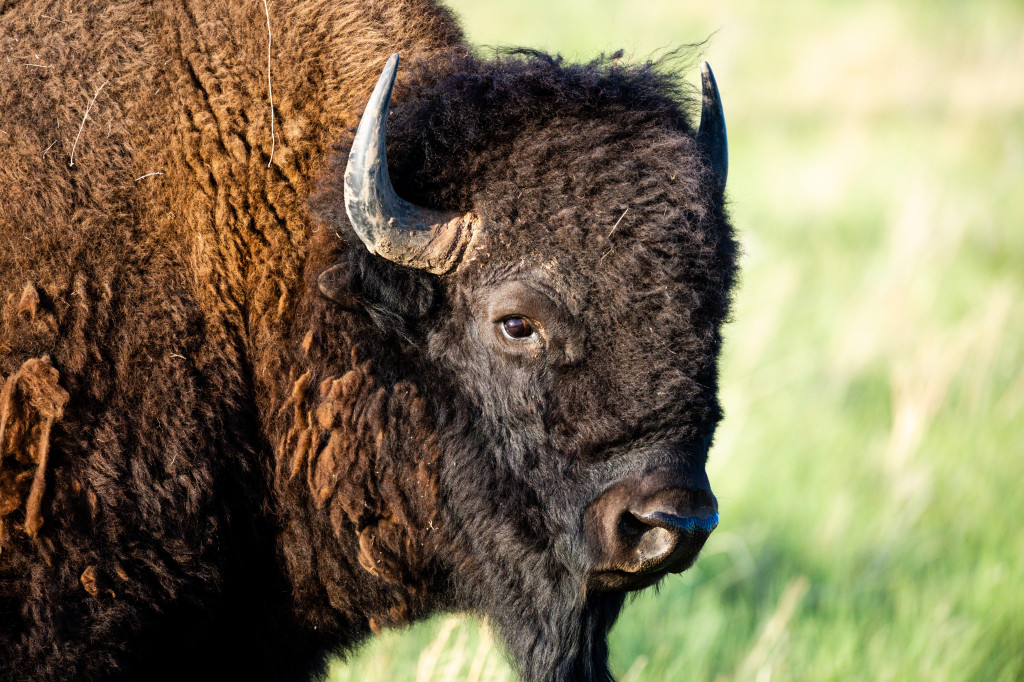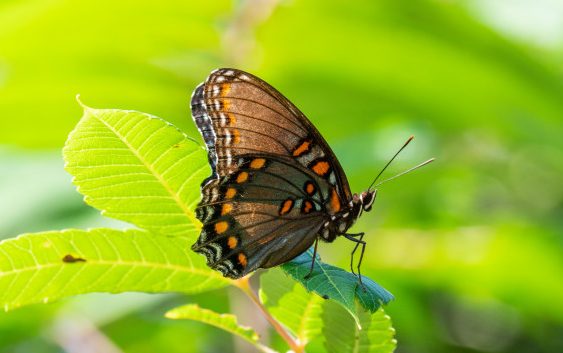Flatulence encompasses a broad spectrum of biological processes among animals.
Enlarge

Photo by Jeff Kurrus, Nebraskaland Magazine
By Monica Macoubrie, Wildlife Education Specialist
If you’re reading this article, you owe a debt of gratitude to my inquisitive 5-year-old daughter. One day, she posed a question that stumped me: Since our dogs fart, do other animals?
Caught off guard, I could only speculate that like humans, these creatures – at least mammals – might indeed experience flatulence. Curious, I dove deeper, which led to the creation of this article. We’ll cover the peculiar, yet fascinating, topic of breaking wind, along with a few unexpected tales.
But first, it’s important to note that “fart” isn’t a term commonly used in the scientific community. Simply put, scientists define a “fart,” or flatulence, as gas expelled from the body’s posterior end, distinct from the mouth. However, this definition encompasses a broad spectrum of biological processes.
Mammals
In humans and other mammals, flatulence is primarily a by-product of digestion. Microorganisms within our digestive tracts break down ingested food, resulting in the production of gases such as carbon dioxide or methane. In the case of humans, these microbial communities aid in the digestion of fibrous plant materials commonly found in foods such as beans, grains and vegetables.
Similarly, the prevalence of flatulence in horses, for example, can be attributed to their largely plant-based diet, which undergoes fermentation in the posterior sections of their digestive system. However, diets rich in meat can also lead to significant flatulence due to the presence of sulfur and other odorous compounds found in red meat.
Furthermore, the elongated intestines of mammals, coupled with their slow digestion, result in fecal matter lingering within the digestive tract for extended periods of time. Consequently, gases generated at any point along the mammalian intestines have ample time to accumulate before reaching the end, traversing through a mixture of odorous substances along the way, thereby acquiring additional foul smells.

One of the most prominent mammals in Nebraska, the American bison, holds a significant place in the state’s history and ecology. These majestic herbivores, once numbering in the millions across the Great Plains, have the digestive system of a ruminant, relying on fermentation in their multi-chambered stomachs to break down tough grasses. As a result, bison are known to produce copious amounts of methane gas as a byproduct of digestion. While this gas is primarily expelled through burping rather than flatulence, the occasional release of wind is not uncommon.
In contrast, bats possess a distinct digestive system due to their unique ability to fly. Unlike other mammals of similar size, bats have a relatively short gut, resulting in reduced intestinal tissue and less food retention within their bodies. This adaptation minimizes weight, thereby making flight less energetically demanding. With such a shortened gut, food traverses the entirety of a bat’s digestive tract in a remarkably brief span of 15-30 minutes. This rapid transit time may imply that bats have insufficient opportunity for flatulence to accumulate. However, scientists are still unclear, so this is speculation.
Although nearly all mammals partake in the humble act of flatulence, there is one notable exception: the sloth. Sloths are famed for their leisurely pace of life, and it’s not just their movement that’s sluggish. These mammals also possess an exceptionally slow digestive system, taking days to process their leaf-based diet. This means they defecate only about once every five days, a behavior that carries risks as they must go to the ground to do so, exposing them to predators. Their diet, rich in leaves, has led to a simplification of their gut bacteria compared to other animals. Instead of producing flatulence, a sloth’s gut flora generates significant amounts of methane, which is absorbed into the bloodstream and then breathed out.

Birds
Birds have evolved a unique digestive system that sets them apart from mammals, including their lack of flatulence. Unlike mammals, birds do not possess a separate large intestine where gas could accumulate and be expelled. Instead, their digestive tract consists of a relatively short intestine leading to a cloaca, a common opening for digestive, urinary and reproductive purposes. This efficient design allows birds to extract nutrients quickly from their food, minimizing the fermentation processes that produce gas in mammals.
Additionally, birds have a specialized digestive process that involves the use of a gizzard to grind food and the secretion of gastric enzymes to break down nutrients efficiently. As a result, any gas produced during digestion is likely absorbed or released in small amounts through the cloaca, rather than building up to the extent seen in mammals.

Insects
Flatulence remains largely unexplored in non-mammalian species. Through extensive research, I’ve discovered that some insects do indeed emit gas.
Insects possess both an anus and a digestive tract, referred to as the gut by scientists, which serves a similar function to human intestines. Several journals have observed that insects generate gas as a byproduct of digestion, which is then absorbed into their hemolymph (blood) before being released through spiracles. Spiracles are tiny openings in the insect’s exoskeleton that facilitate respiration and gas exchange.
Remarkably, evidence of insect flatulence has been found preserved in amber, akin to the scenario in Jurassic Park where a mosquito is trapped in tree sap. Gas bubbles can be seen emanating from the anuses of these preserved insects, providing compelling evidence of gas-producing gut microbes at work.

Celebrated for their elegant flight and often vibrant colors, butterflies are rarely associated with flatulence. Butterflies do emit gas, though their flatulence is unlike that of mammals – their nectar-based diet lacks the smelly waste products typical in mammalian diets.
Following a meal, nectar descends into a butterfly’s digestive system, initiating the digestion process crucial for energy and mating. Enzymes within the stomach further break down sugars in the nectar, producing gases as a natural byproduct, though it’s not made of predominantly methane, as is the case in mammals. Instead, butterflies store these gases, along with solid waste, in their rectum until pressure builds, necessitating expulsion for comfort and bodily maintenance. If one were to detect a butterfly’s emission, it would likely carry a sweet fragrance.
Termites, regarded as architects of the insect world, have an unexpected global impact. These tiny creatures, despite their size, are prolific gas producers due to their unique digestive systems and symbiotic relationships with microbes. Within the termite gut resides a complex community of microorganisms, including bacteria, protists and archaea, collectively known as gut flora. These microbes play a vital role in breaking down the cellulose-rich plant materials that termites consume, converting them into nutrients that the insects can absorb.
However, as a byproduct of this digestion process, large quantities of methane gas are generated. Remarkably, termites are estimated to be among the top contributors to methane emissions globally, rivaling even the methane output of ruminant livestock, such as cattle. While termites may be small, their collective flatulence holds significant implications for climate change and ecosystem dynamics.
So, to answer my 5-year-old’s question, other animals do indeed fart.
 Nebraskaland Magazine
Nebraskaland Magazine


